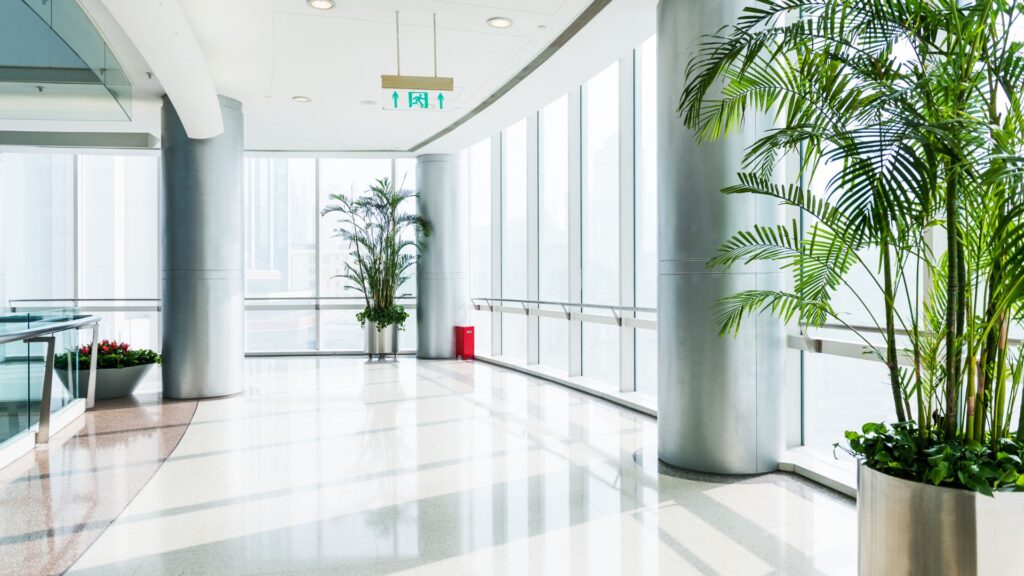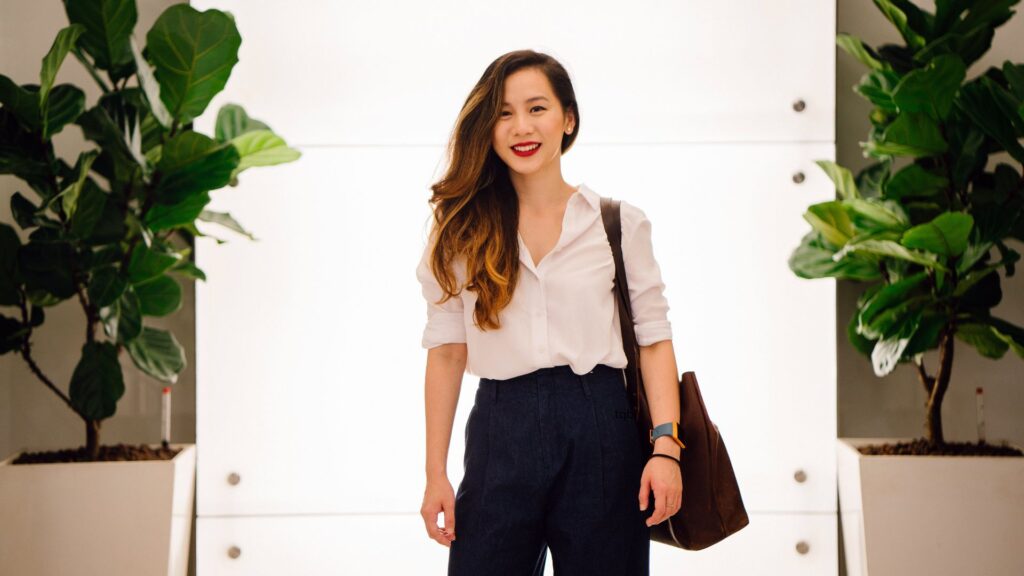Corporate wear around the world has long been influenced by Western styles, primarily originating from colder regions. The structured suits, full-sleeved shirts, and layered outfits are designed for chilly offices, harsh winters, and temperate climates.
Western business attire traces its origins back to the Industrial Revolution and the rise of corporate culture in Europe and North America. The structured suit became a symbol of professionalism and authority, reflecting the values of order and hierarchy in the workplace. Over time, globalization helped spread these dress norms across industries and continents, making them the gold standard for corporate fashion worldwide.
However, in tropical cities where temperatures soar and humidity levels remain high, such attire can feel restrictive, impractical, and even counterproductive to workplace comfort and productivity and require significant adjustments for practicality and comfort.
Over the past few years, there have been noticeable shifts in corporate fashion, with many businesses and professionals embracing climate-friendly adaptations. Lightweight fabrics, relaxed dress codes, and cultural influences have gradually shaped a new way of dressing for work. While these changes are gaining momentum, there is still a need for a broader understanding and implementation of office wear that fully aligns with tropical climates.
Tropical office wear calls for smarter, climate-responsive choices that balance professionalism with breathability. The good news? Many modern fabrics and styling innovations make it possible to maintain a polished look while staying cool. In this blog, we’ll explore the advantages of traditional corporate attire, why modifications are needed for tropical climates, and how professionals can adapt their office wear for comfort and efficiency without compromising style.

Why Traditional Western Corporate Attire Became the Norm
Western corporate attire has established itself globally for its sleek and structured aesthetic. Here’s why it has been widely accepted in professional settings:
| Advantages of Traditional Corporate Attire | Men | Women |
| Professional & authoritative look | Suits and blazers exude confidence and formality | Tailored dresses and blazers add sophistication |
| Layering for temperature control | Keeps warm in colder climates and air-conditioned offices | Allows styling flexibility with blazers and coats |
| Cultural and historical influence | Based on business etiquette from early industrialized nations | Derived from European formalwear traditions |
| Uniformity across industries | Ensures a cohesive and polished appearance | Helps set a structured and professional tone |
While these attributes work well in temperate or cold climates, tropical cities require significant adjustments for practicality and comfort.
Challenges of Western Office Wear in Tropical Climates
Tropical cities like Singapore, Mumbai, Bangkok, and Jakarta experience high temperatures and humidity levels year-round. Traditional corporate outfits can present the following challenges:
- Heat Retention: Wool-blend suits, thick fabrics, and multiple layers trap heat, leading to discomfort.
- Poor Breathability: Polyester and synthetic fabrics often used in formal wear can cause excessive sweating.
- Restricted Air Circulation: Items like ties and blazers reduce airflow, making employees feel overheated.
- Maintenance Hassles: Sweat stains and odor buildup require frequent washing and ironing.
To combat these challenges, office wear must evolve with tropical-friendly adaptations.

Smart Adjustments for Office Wear in Tropical Cities
1. Choosing the Right Fabrics
Fabrics play a crucial role in ensuring comfort in hot and humid conditions. Here’s a comparison of conventional vs. tropical-friendly fabrics:
| Fabric Type | Traditional (Western) | Tropical-Friendly Alternative | Benefits |
| Wool | Lightweight wool blends | Linen, seersucker, chambray | More breathable, absorbs sweat |
| Polyester | Synthetic blends | Organic cotton, bamboo fabric | Soft, sweat-wicking, eco-friendly |
| Silk | Pure silk (less breathable) | Silk-cotton blends | Retains elegance, enhances breathability |
| Heavy cotton | Thick, woven cotton | Lighter cotton variants | Cooling effect, easy maintenance |
2. Modifying Fits for Comfort
- Relaxed Fits: Slim-cut suits and body-hugging dresses may look sharp, but looser fits allow better airflow.
- Short-Sleeve Options: Opting for half-sleeve or three-quarter sleeve shirts can help in hot climates.
- Breathable Inner Lining: Jackets and blazers with breathable mesh linings reduce heat retention.
3. Dropping or Modifying Attire Pieces
Certain traditional office wear elements can be modified or omitted altogether for better comfort:
| Attire Piece | Why It Can Be Dropped/Modified | Alternative |
| Ties | Restricts air circulation around the neck | Open-collar shirts |
| Blazers | Adds an unnecessary layer in humid conditions | Lightweight unlined jackets |
| Stockings | Traps heat and adds discomfort | Breathable fabrics or bare legs |
| Dark colors | Absorbs heat and increases sweating | Lighter shades that reflect heat |

Inspiration from Countries Adapting to Climate
Many tropical countries have redefined business wear to better suit their environment. Here are some notable examples:
- Singapore: Business casual is widely accepted, with many professionals opting for light fabrics and short-sleeved shirts.
- Philippines: The ‘Barong Tagalog,’ a formal embroidered shirt made from breathable fabric, replaces suits in business settings.
- Hawaii: ‘Aloha shirts’ serve as office attire in many workplaces, offering a relaxed yet professional look.
- Caribbean Nations: Loose-fitting linen shirts and dresses are the norm for professional settings.
- Brazil: Many offices embrace smart casual, incorporating linen and cotton-based outfits tailored for warm weather.
- Indonesia: The ‘Batik’ shirt, a formal yet breathable option, is widely worn in business settings.
These adaptations show that professionalism doesn’t have to come at the cost of comfort.
Brands Offering Office Wear for Tropical Climates
Several global brands specialize in breathable, tropical-friendly office attire:
Selecting appropriate office wear for tropical climates involves choosing garments made from lightweight, breathable fabrics that offer comfort in warm and humid conditions. Here are some global brands specializing in office attire suitable for such environments:
A Japanese brand renowned for its innovative fabric technologies, UNIQLO offers office wear crafted from breathable materials like linen and AIRism, designed to keep you cool in hot climates.
2. Lululemon
Originally a Canadian athletic wear brand, Lululemon has expanded into office-appropriate attire with their ABC (Anti-Ball Crushing) pants for men and Commission shirts, both made from lightweight, moisture-wicking fabrics suitable for warm environments.
3. Eileen Fisher
An American brand known for its sustainable practices, Eileen Fisher provides office wear made from natural fibers like organic cotton and linen, offering breathable and comfortable options ideal for tropical climates.
4. MUJI
This Japanese retailer offers minimalist office wear made from natural materials such as linen and organic cotton, providing breathable and comfortable options suitable for warm climates.
5. Patagonia
While primarily known for outdoor apparel, Patagonia offers business-casual clothing made from lightweight, moisture-wicking fabrics, suitable for office wear in hot and humid conditions.
6. Tentree
A Canadian brand committed to sustainability, Tentree crafts office wear using low-impact materials like organic cotton and TENCEL™ Lyocell, which are breathable and suitable for tropical climates.
7. People Tree
A pioneer in sustainable fashion, People Tree offers office-appropriate clothing made from natural fibers like organic cotton, providing breathable options ideal for warm climates.
8. Everlane
An American brand focusing on transparency and sustainability, Everlane offers office wear made from lightweight materials such as breathable cotton and linen, suitable for hot and humid conditions.
9. Tilley
Known for their travel and outdoor clothing, Tilley offers breathable and moisture-wicking shirts and pants that can transition into office wear, ideal for tropical climates.
10. Fjällräven
A Swedish brand specializing in outdoor apparel, Fjällräven offers lightweight and breathable

Actionable Insights for Office Wear in Tropical Cities
- Invest in Breathable Fabrics: Prioritize organic cotton, linen, and bamboo fabric over heavy blends.
- Adjust Your Layers: Skip unnecessary layers like ties and heavy blazers.
- Embrace Smart Casual: Offices can adopt business casual with polished short-sleeve shirts, relaxed trousers, and stylish flats.
- Experiment with Colors: Light shades and pastels keep you cool while maintaining a professional look.
- Advocate for Office Dress Code Changes: Encourage HR policies that consider climate-friendly business attire.

Conclusion
Corporate fashion should be adaptive, and tropical cities demand an evolution in office wear. While Western business attire has set global standards, it’s essential to tweak traditional norms for climate compatibility. By choosing breathable fabrics, modifying attire pieces, and drawing inspiration from cultures that have adapted to their environment, professionals can look sharp without compromising on comfort. The goal is to create a workplace culture where dress codes enhance productivity rather than hinder it. Gain more insights on work wear and how to balance comfort and productivity here.
FAQs
-
Can I wear linen to work without looking too casual?
Absolutely! Opt for structured linen shirts and well-tailored linen trousers for a crisp yet comfortable look.
-
Are open-toe shoes acceptable for office wear in tropical cities?
This depends on the company’s dress code, but many workplaces allow relaxed options.
-
What are some must-have wardrobe staples for office wear in a tropical city?
A lightweight blazer, breathable cotton shirts, relaxed-fit trousers, and comfortable leather loafers.
-
How can companies implement climate-friendly dress codes?
Organizations can revise dress codes to allow breathable fabrics, short-sleeve options, and business casual attire on non-formal days.
Disclaimer
These recommendations may not apply to industries, regions and professions requiring strict formal attire, uniforms, or cultural dress codes. Always consider company policies, cultural and professional requirements.



